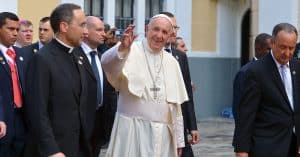Poll: Kamala Harris leads Democrats in 2026 CA governor's race
In a recent poll gauging potential Democratic Party contenders for the 2026 California gubernatorial race, former Vice President Kamala Harris has emerged as a leading candidate.
Despite an unsuccessful bid for the presidency in 2024, Harris continues to attract considerable support from California's electorate, and a new poll conducted by Emerson College Polling reveals her to be the current frontrunner, securing 57% support from Democratic Party primary voters, as Breitbart reports.
The survey results put her at a significant advantage over other potential candidates, enhancing her visibility within California politics after her 2024 loss to Donald Trump.
Harris Tops Democratic Party Field in California
The poll involved 1,000 registered voters in California and highlights Harris as a strong contender within the Democratic field. The survey was carried out under the collaboration of Emerson College Polling, Inside California Politics, and The Hill between Feb. 10 and 11.
According to the data, the former vice president stands significantly ahead of her closest rival, former Rep. Katie Porter, who garnered 9% support among participants. Other potential candidates such as Antonio Villaraigosa, former Los Angeles mayor, and Eleni Kounalaki, held equal support of 4% each.
Even with these figures, 17% of respondents in the Democratic Party primary subset remained undecided, indicating a level of uncertainty about the upcoming race. The poll's subset surveyed 469 Democratic Party primary voters, with a margin of error of plus or minus 4.5 percentage points, suggesting Harris has a promising lead.
Poll Participants Express Varying Preferences
The results reflect a wide approval for Harris amidst her return to California, marking a significant shift following her national campaign efforts. Her statement underscores a commitment to staying "in touch" with the local community and leaders.
Harris stated, "My plans are to be in touch with my community, to be in touch with the leaders, and figure out what I can do to support them." Her statement emphasized continuous involvement in local community activities which she sees as a fundamental duty.
Despite her previous presidential campaign's outcome, Harris remains a dominant figure in California politics. Her dedication to public service and community engagement denotes an ongoing presence regardless of elective office.
Analysts Discuss Camaraderie and Competition
Political analysts recognize Harris's standout position within the Democratic Party field. Emerson College Polling's Spencer Kimball noted, “If Vice President Harris enters the Democratic primary, she would start as the clear favorite.” Experts like Kimball foresee an open and competitive landscape for other Democrats should Harris decide not to vie for the governorship. Her potential absence from the race would likely create opportunities for new voices to emerge.
This context suggests a dynamic electoral process that could challenge conventional political pathways and introduce new strategic discussions among California Democrats.
Impact on State's Political Landscape
The polling outcomes mark the beginning of what could be a significant political movement within California as the state prepares for the 2026 elections. With Harris in a prominent position, the Democratic field might experience a rallying effect around her potential candidacy. Each hypothetical contender continues to appeal to varying voter demographics. The notions of support extended toward candidates like Porter, Villaraigosa, and Kounalaki illustrate the diversity of political thought within the Democratic constituency.
The period leading up to 2026 promises to be one of an intricate political landscape, where candidates will navigate both state and national interests. It underscores the importance of local engagement while considering broader implications that state leadership can embody.
Looking Ahead to 2026 Election
California's gubernatorial race will undoubtedly attract significant attention, given the influential position Harris holds among Democratic Party voters. The state's size and impact magnify the importance of each candidate's message and campaign strategy. The findings from the Emerson College Polling survey serve as an informative glimpse into initial electoral sentiments. It reflects the essence of evolving candidate perceptions and foreseeable campaign dynamics.
The upcoming months are likely to further define the race's contours, setting the stage for a pivotal contest in California’s political arena. As Harris weighs her decision, all eyes remain on her potential candidacy and its implications. With the electoral horizon of 2026 approaching, the landscape is bound to develop in unforeseen ways, preparing California for a robust democratic exercise.




